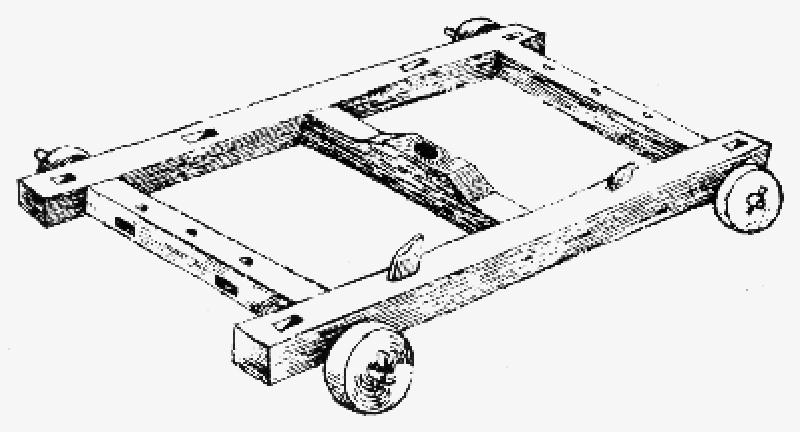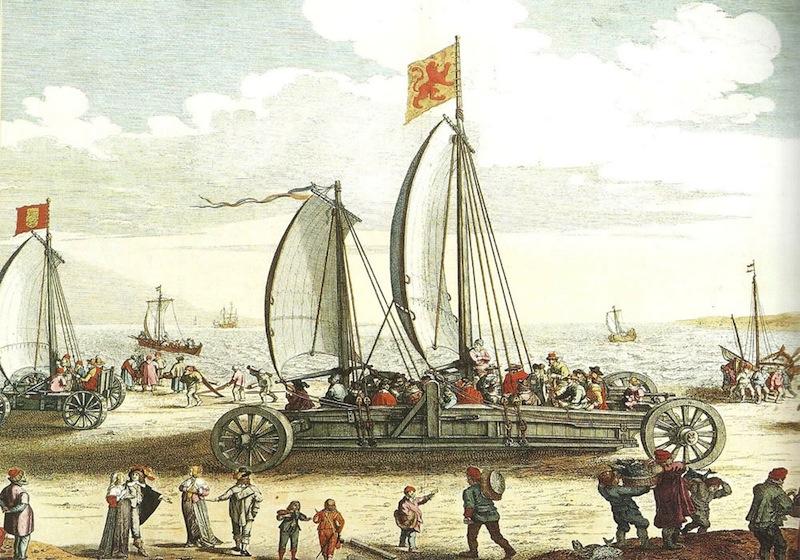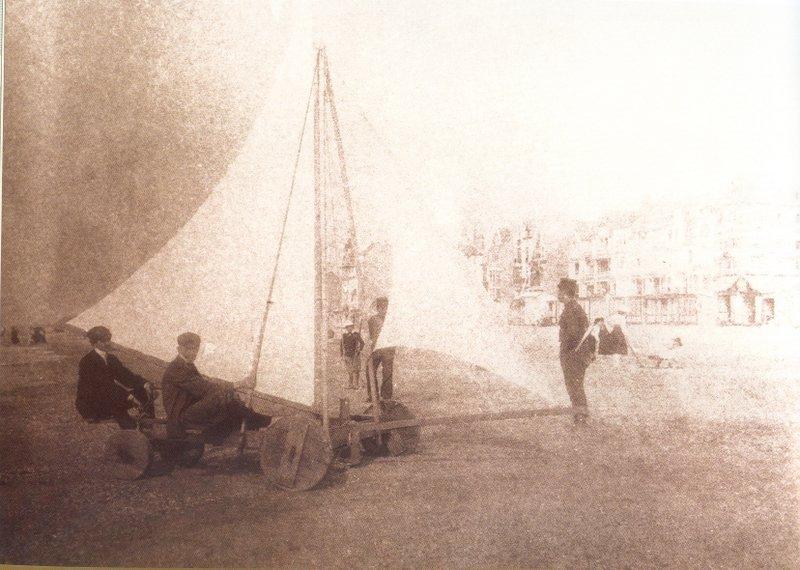Landsailing history
The use of wind as a land-based propulsion force dates back several millennia. The Egyptians, it seems, were the first to try to apply this principle to their chariots. The Pharaoh Amenemhatt II of the XIIth dynasty (about 2,000 BC) is referred to as a "char-à-vent". The Romans also made some inquiries about this unusual means of locomotion. In 405 BC, Flavius vegetius describes, in a book entitled Epitoma rei militaris, a wind-drawn chariot.
In China, it is also known to use the wind as a pushing element for a long time. Proofs are the "wheelbarrows", which would have been used for the construction of the wall of China, about 247 BC. The Chin Lou Tzu, written by emperor Liang Yuan Ti (b. 508), says that "Kaotschang WuShu succeeded in building a wind chariot that was capable of transporting thirty men on several Hundreds of kilometers in one day ". We even found an illustration of sand-yard that the specialists date from the Sung period (11th century).
In Europe, archives are dumb for centuries, until 1543, when it was learned that a certain Johan Friedrich had tried a "land-based sailing vehicle." This happened in Saxony, at Torgau.
















